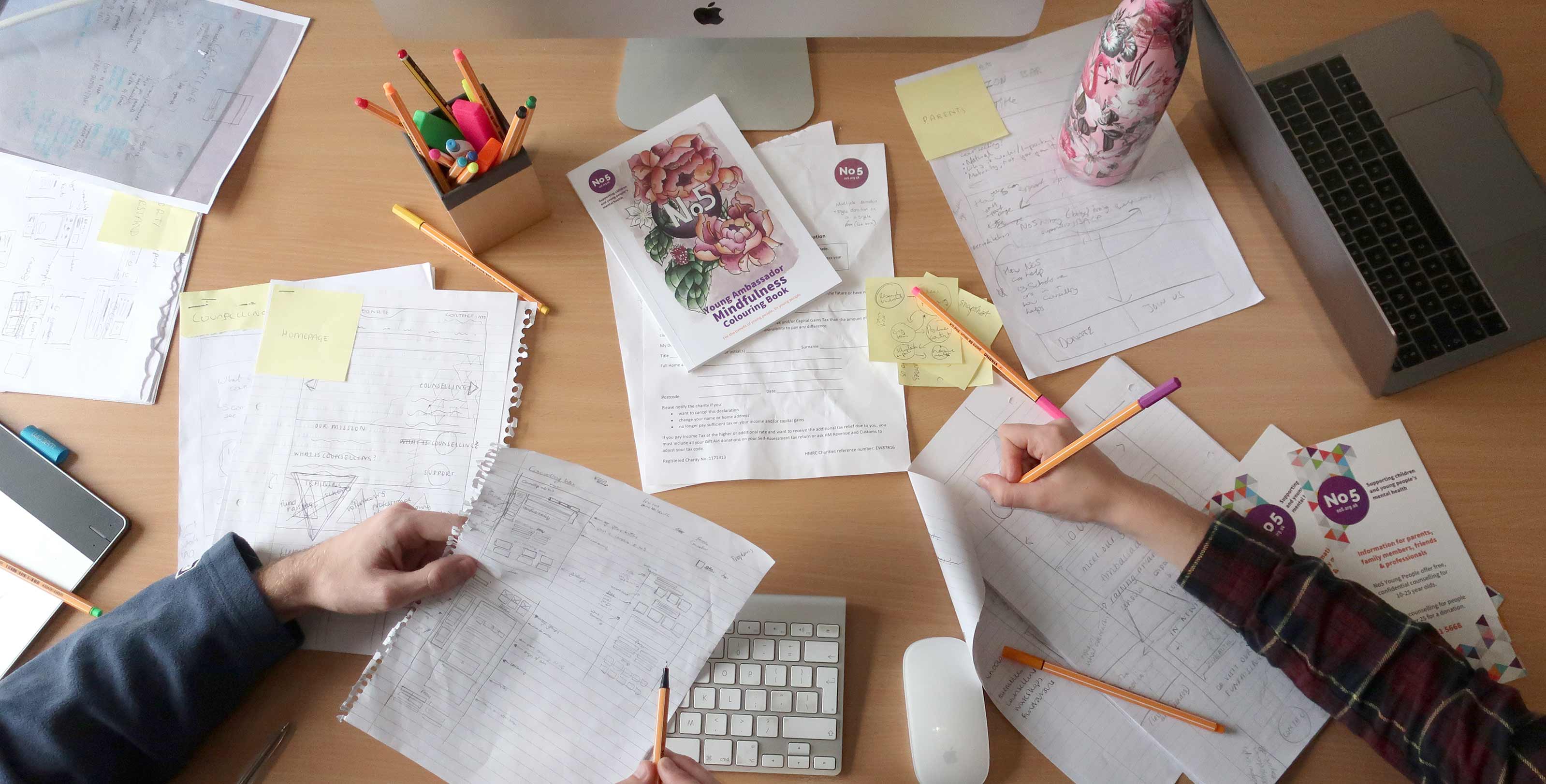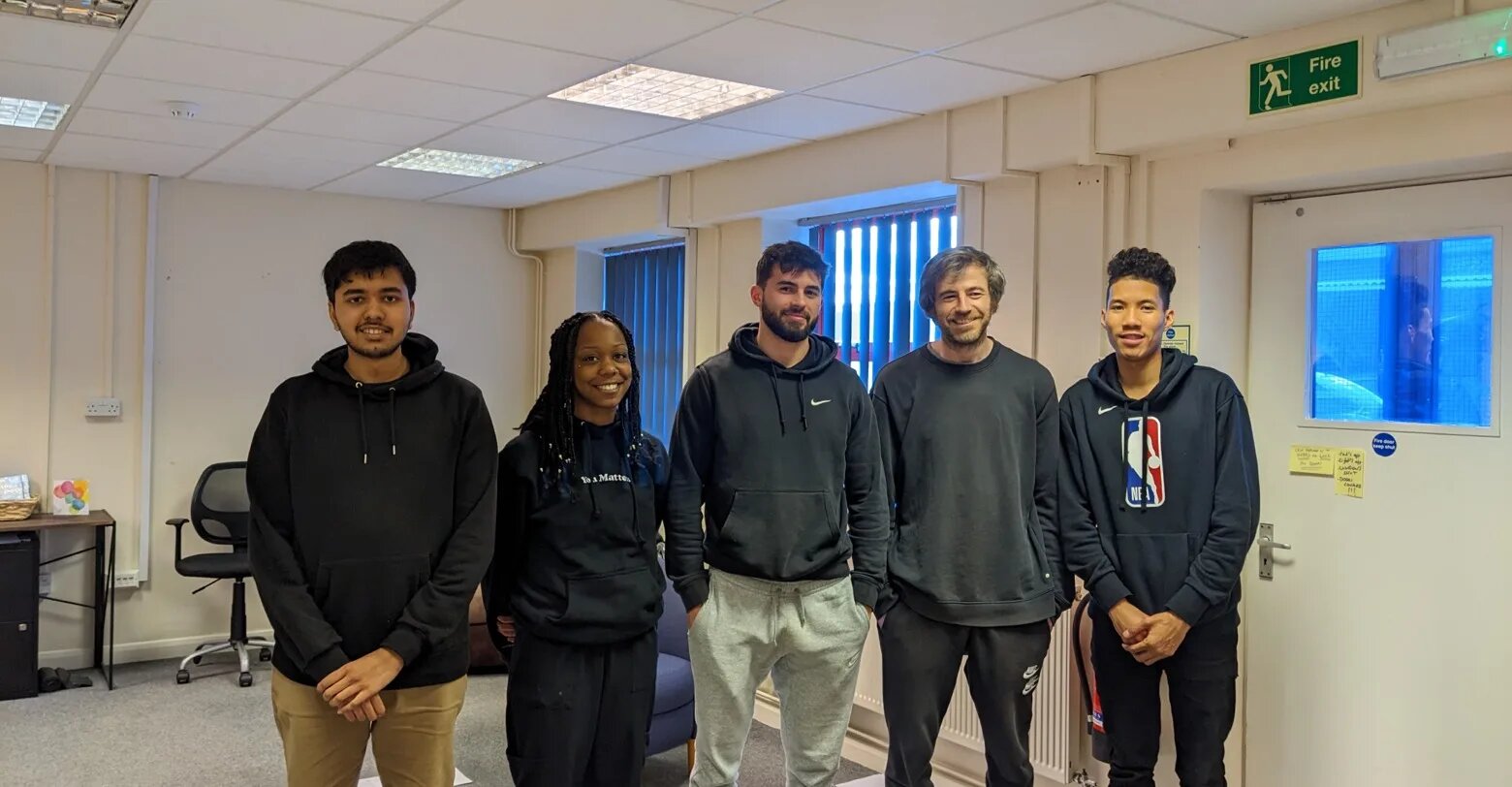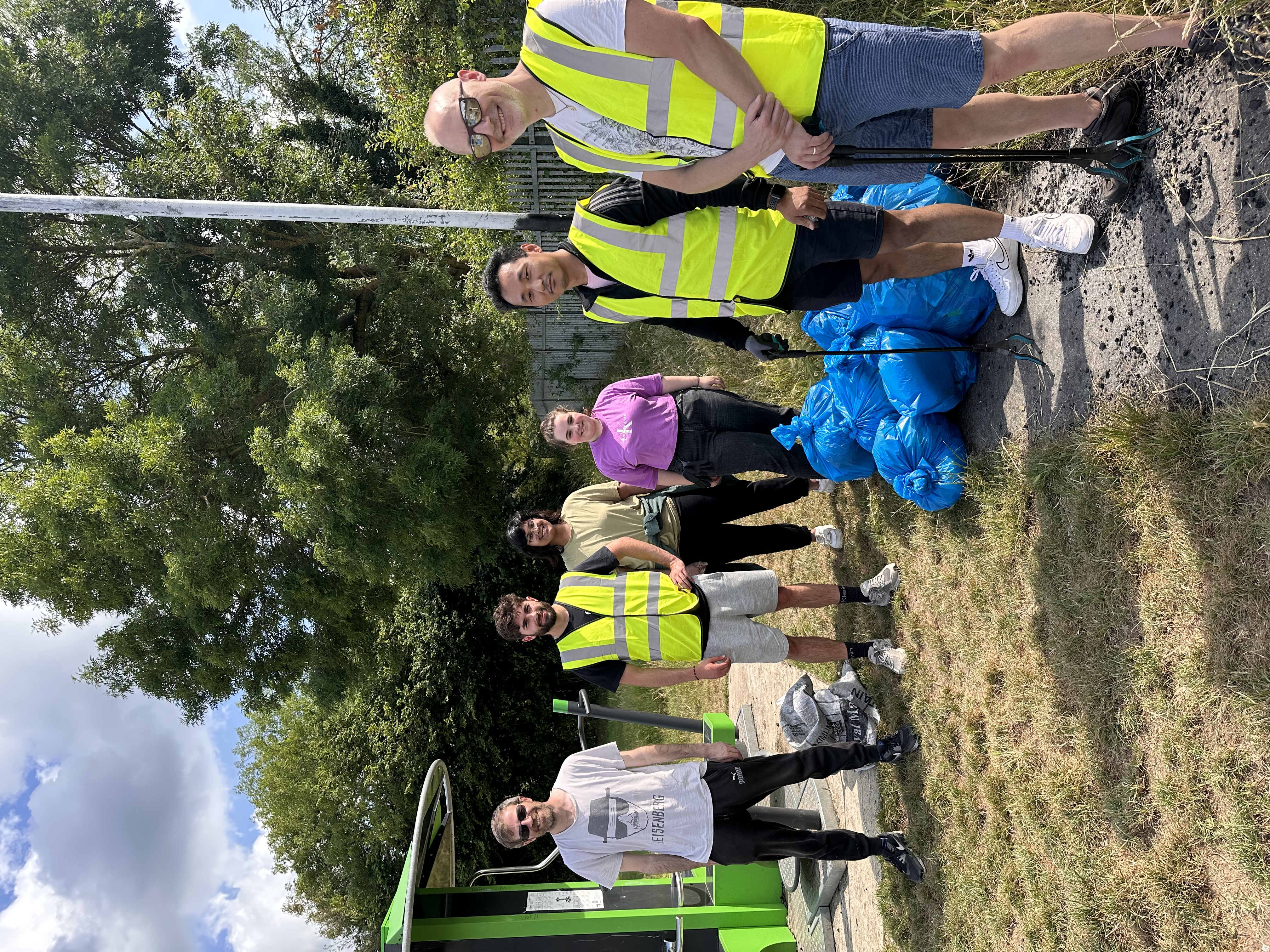For years now, our team has utilised the design sprint process to move projects forward and solve complex problems. A design sprint is intended for tackling a myriad of design and business challenges. It maximises productivity by combining teamwork, strategy, creative thinking and prototyping, allowing the generation of unique solutions to problems in a short period of time.
A design sprint is a feedback loop that can be broken down into managed stages.

Understand
All relevant information is gathered, parameters are set, scope is gauged and a thorough understanding of what the end goals and its associated reality are.
Unpack
Research is shared with the team to bring everyone involved in the project to the same level of understanding, to share initial ideas and thoughts and ensure everyone is heading in the same direction.
Sketch
Each person involved in the project is tasked with individually generating as many detailed solutions to the problems as possible. It may involve mind mapping, personal research or sketching concepts and wireframes.
Decide
The team reconvenes and pools all their ideas in order to decide which will be taken forward to prototype.
Prototype
Encompasses both design and development work involved in creating a working solution to the original problem.
Test/Launch
In this stage a testing schedule will be completed. Issues are identified and the experience is further evaluated. Once the product has gone through its iterations, improvements or changes and any identified bugs have been resolved, the product can go onto its next stage.
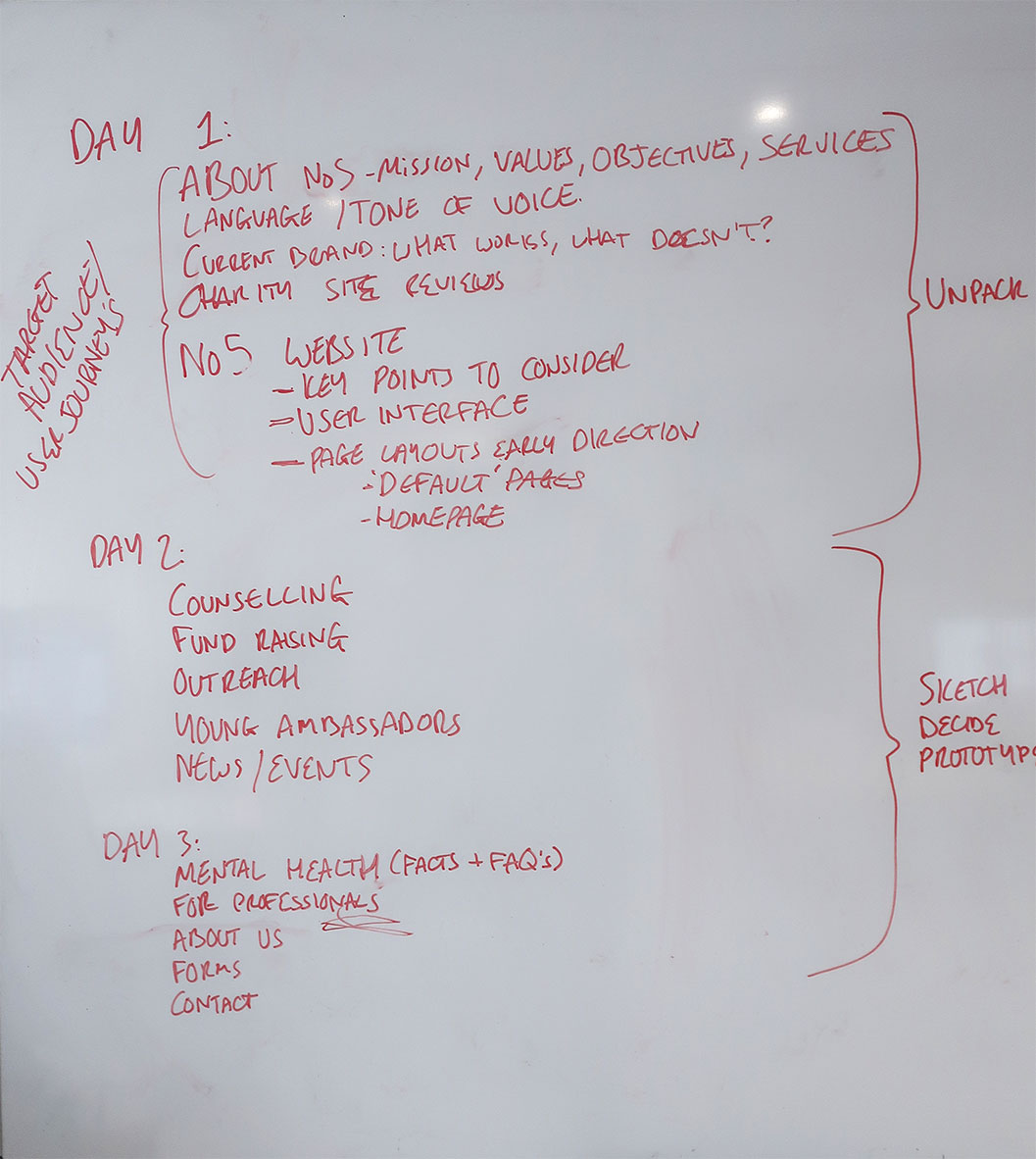
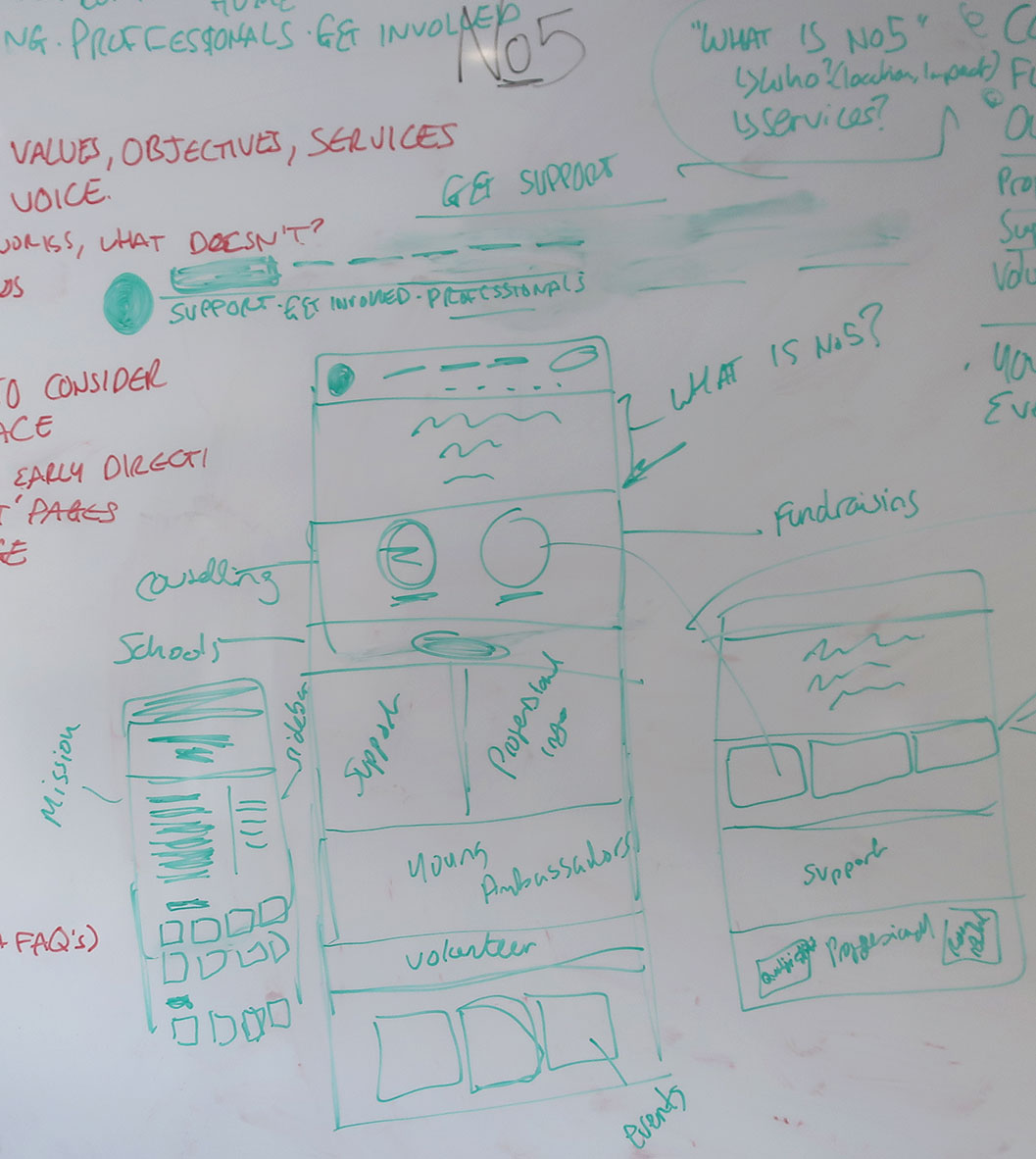
Left: Plan of action for No5’s Design Sprint / Right: Going through the wireframing process with our team and client.
Throughout the entire process we need to:
- Be conscious of people’s needs, expected journeys and objectives
- Ensure feasibility
- Make it scalable where possible
- Fit it neatly to its surroundings
- Keep on planning, analysing and be open to change
Having the client present and “unpacking” all our previous understanding allowed for an even deeper familiarity with their organisation and their audiences’ needs. At the same time we looked to evolve their brand whilst offering additional stability and support to their staff, volunteers, and the young people of Reading.
If there are others taking part in the design sprint with you, it can be useful to think of the informal and dynamic roles people will play:
The Expert/Leader
Responsible for the structure, direction and unpacking whilst highlighting strengths and weaknesses. The Leader evaluates and sets realistic goals, manages expectations and ensures successful delivery of the sprint.
The Team
The teams will ideate, critique and prototype towards our end goals. They may have specific skill sets (artist, developer, copywriter etc.) as well as unique perspectives that will help produce an innovative end product.
The Client
Those who have invested in the project. They hold key information and expertise outside of the team, and have specific needs that have to be understood and accounted for.
The Audience
Those who will use, view or otherwise come into contact with our product. Understanding and working for your audience is a core facilitator of a successful product and everything we do should be with our target audiences in mind.
Due to the open-ended nature of the process, unique challenges present themselves for debate that extend far beyond initial considerations, which were already the result of a great deal of thinking. This allows us to arrive at well reasoned conclusions that can be built on further, and that give the basis for more prosperous insights down the line.
As a creative agency we find the design sprint useful for carrying out tasks and projects such as:
- Exploring culture and trends
- Identifying personas and pathways
- Brand building, creating tone of voice and visual language
- Designing, building and testing user experiences
The design sprint process is a great collaboration tool to maximise team productivity for any project, no matter the size. It gives everyone involved an in-depth understanding of the tasks at hand and foresight to come up with solutions for complicated problems within a short period of time. Hopefully this article gives you a good start toward applying it for your next great creative or business challenge.
Additional reading and references:
- Google’s Agile Methodology
- The Practice of Creativity: A Manual for Dynamic Group Problem-Solving
- Agile Software Development
- Principles of the Agile Manifesto
- The Fundamental Stages of The Design Method
- Agile Unified Process
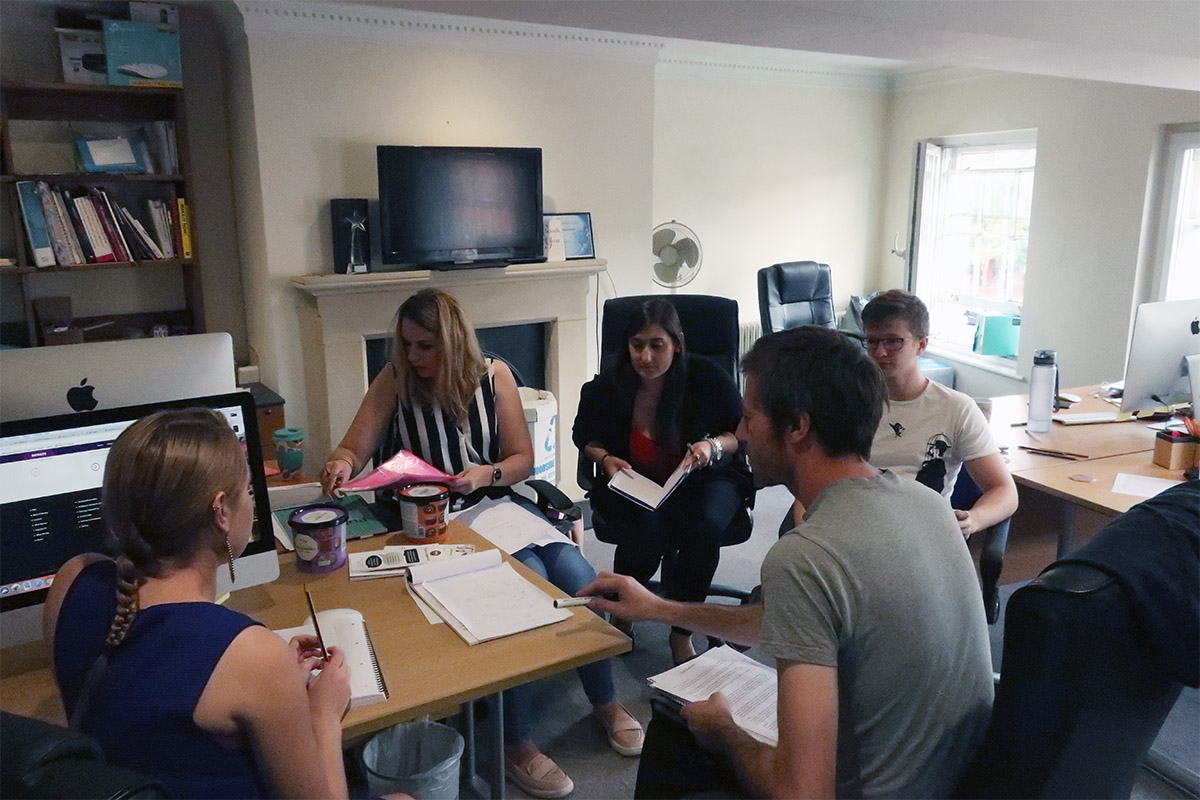
Red Balloon and No5 get to work.
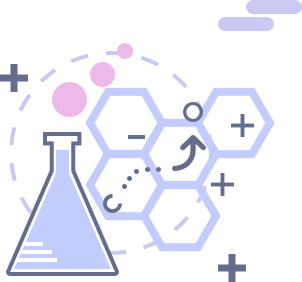
Let’s build something great together
We help businesses use technology to maximise their productivity and communicate better with new and exisiting customers. Contact us to find out how we can help your business acheive more today.
